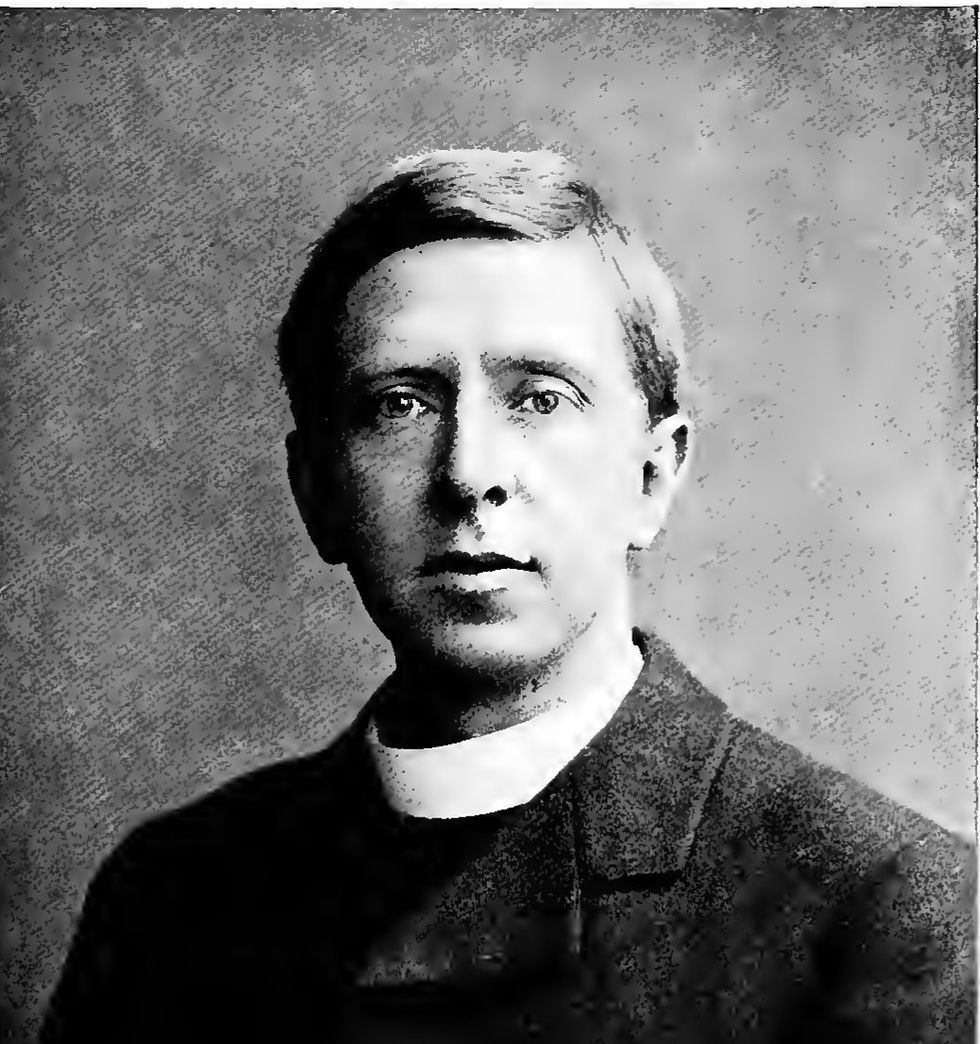June 28 Monsignor Benson's Lord of the World
- Pearl of Great Price
- Jun 27, 2021
- 3 min read

Today in 1906 Monsignor Robert Hugh Benson finished his dystopian science fiction novel called Lord of the World that centres upon the reign of the Antichrist and the end of the world. Writing that evening in his diary, "I have finished… and really there is no more to be said. Of course, I am nervous about the last chapter – it is what one may call just a trifle ambitious to describe the End of the World. But it has been done"
Pope Francis has recommended Robert Hugh Benson’s Lord of the World to the faithful as a book that depicts a “globalization of hegemonic uniformity.” Similarly, Cardinal Ratzinger, referred to the Universalism depicted in Lord of the World in an address he gave in Milan in 1992.
Science- Fiction, where myth and fact are moulded together, can see its origins as a literary genre as early as the third century with the writings of Lucian of Samosata, who was born in Turkey and died in Egypt. His work, A True Story contains many themes that are characteristic of modern science fiction, including travel to other worlds, extra-terrestrial lifeforms, interplanetary warfare, and artificial life. However, it was Mary Shelley's Frankenstein in 1818 that helped define the form of the science-fiction novel and made it a genre that writers and publishers became interested in. Then began a flourishing of Science Fiction, and writing a couple of generations later, many critics consider H. G. Wells as one of science fiction's most important authors, He has even been called "the Shakespeare of science fiction”. However, Wells' belief that Atheism, Marxism, World Government, and Eugenics would lead to an earthly utopia was very controversial. Although the Utopia was coined by St Thomas More, Wells distanced himself from Christianity, and later from theism, and finally, late in life, he was essentially atheistic. Wells' opposition to organised religion reached a fever pitch in 1943 with publication of his book Crux Ansata, subtitled "An Indictment of the Roman Catholic Church".

Benson, was the son of the Archbishop of Canterbury and had been ordained an Anglican priest, but created a scandal when after his fathers death, he became a Catholic and was subsequently ordained. His book ‘The Lord of the World’ was in many ways an inversion of the science fiction novels of H. G. Wells and has been called one of the first modern works of dystopian science fiction. Envisaged when Benson was chaplain at Cambridge University the idea of a novel about the Antichrist was first suggested to Fr. Benson by his friend and literary mentor Frederick Rolfe. Influenced by his interest in history, particularly the recusant history of Catholics in England who were forced underground during the time of Queen Elizabeth (See Pod Apr 26 ). The Antichrist figure – Julian Felsenburg - is based on Napoleon Bonaparte, or at least Napoleons leadership style. The book describes a future where faith in God and religion has been replaced by secular humanism. Few religious enclaves are scattered throughout the globe, and the leaders of the secular government see the Church as a blockade to progress and thus view it as an enemy. The two main protagonists are Father Percy, who tries to encourage his fellow faithful but faces many obstacles, and Julian Felsenburgh who becomes a dominant figure in world politics, promising peace and harmony in exchange for obedience, and is adored by the crowds. Father Percy, is elected as the new Pope and gathers the remaining faithful in Rome to try and prevent an upcoming apocalypse at the hands of Felsenburgh. A climactic battle ensues between the two parties, which will have earth-shaking consequences.
Benson was inspired by the French Utopian Socialist Claude Henri de Rouvroy, comte de Saint-Simon. In Saint-Simon's writings he encountered, "A vision of a dechristianised civilisation, sprung from the wrecking of the old régime, arose before him . Benson wrote it during the pontificate of Pope Pius X and prior to the First World War, and accurately predicts interstate highways, weapons of mass destruction, the use of aircraft to drop bombs on both military and civilian targets, and passenger air travel.vIn the preface to the book Benson writes "I am perfectly aware that this is a terribly sensational book, and open to innumerable criticisms on that account, as well as on many others. But I did not know how else to express the principles I desired (and which I passionately believe to be true) except by producing their lines to a sensational point. I have tried, however, not to scream unduly loud, and to retain, so far as possible, reverence and consideration for the opinions of other people. Whether I have succeeded in that attempt is quite another matter." The book is a favourite of Pope Francis and referred to by Cardinal Ratzinger in a speech in Milan in 1992.
.jpg)


Comments